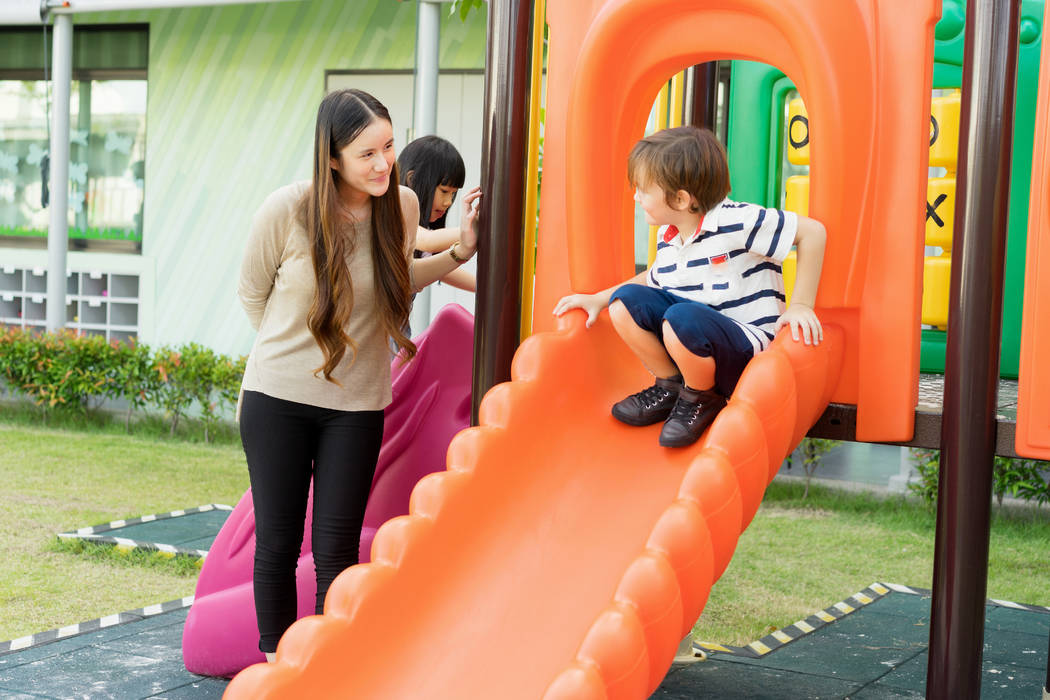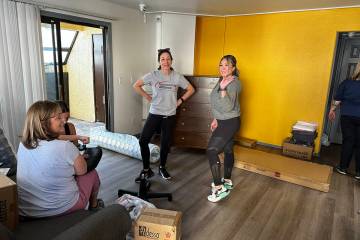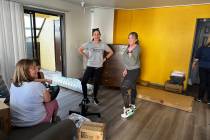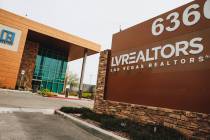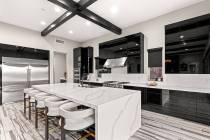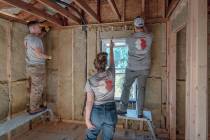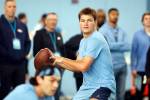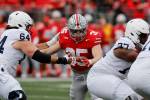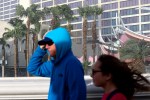Summertime is almost here; is your HOA playground ready?
By now, homeowners associations and their community managers have discussed the recent $20 million award against an association for failure to eliminate playground hazards. According to insurance companies, the majority of playground injuries stem from falls or impact with climbers and swingers. Fatalities occur because of strangulations and elevated falls.
To eliminate playground hazards requires safe equipment design and installation, proper and regularly scheduled inspections and maintenance servicing. There is one other very important element in preventing common playground injuries and that is with adequate adult supervision, that is you and me watching our children and grandchildren.
Here are some steps that your association can implement in developing a safer environment at your playground.
1. Provide adequate protective surfacing beneath and around playground equipment. Since most of the playground injuries come from failing children, placing loose fill and unitary surfacing materials will lessen the impact of a falling child when compared with grass, packed earth, concrete or asphalt.
2. Provide adequate-use zones around all playground equipment. It is recommended that the zones for playground extend to a minimum of 6 feet in all directions from stationary equipment, such as climbers. For older children’s swings, the zone is 6 feet on each side and two times the height of the swing pivot in the front and rear. Any slides over 6 feet, the use zone exit is equal to the height of the slide.
3. Eliminate protrusion and entanglement hazards. Protrusions consist of anything that is capable of cutting or impaling a child that falls against it. Entanglement hazards are protrusions that can catch strings or clothing worn around a child’s neck, causing strangulation. Look for bolts that extend more than two threads beyond a nut, or open “S”-type hooks and prongs or handholds that extend outward from the support structure.
4. Eliminate entrapment openings measuring between 3.5 and 9 inches. Openings with this size range can allow a child’s body to pass through but not their heads. Often children will enter these openings feet first and slide through creating a head entrapment. Look for openings at the top of slides, between platforms, climbing rungs and between fence pickets.
5. Provide sufficient spacing between equipment to avoid overcrowding. You should not have overlapping zones for swings, slides and merry-go-rounds. It is recommended that pieces of equipment more than 30 inches high must have a 9 foot space between them. For smaller equipment less than 30 inches in height, you should have a minimum of 6 feet left between each.
6. Eliminate trip hazards on the playground. Just an FYI, we should be looking at trip hazards throughout our communities.
7. Eliminate crush, shearing and sharp-edge hazards that can penetrate skin. Exposed moving parts found in swings and seesaws, as examples, can have exposed moving parts capable of crushing fingers and other body parts. Eliminate this hazard by covering them or removing the equipment.
8. Provide guards on elevated surfaces, including platforms, ramps and bridges to prevent accidental falls. Pre-school age children are more susceptible to falls than older children. Equipment intended for this age group should have guard rails on elevated surfaces more than 20 inches in height and protective barriers on surfaces over 30 inches. For school-age children, elevated surfaces higher than 30 inches should also have guardrails and protective area should be placed on surfaces higher than 48 inches.
9. Remove equipment not recommended for public playgrounds. You can contact the Consumer Product Safety Commission. It has a list of equipment that is not recommended, including trampolines, swinging dual exercise rings, trapeze bars, giant slides, swinging gates, metal animals and climbing ropes not secured at both ends. Check your equipment against their list as some of your equipment may not be suitable for some age groups.
10. Provide equipment and activities appropriate to the age of the children using the playground. The Consumer Product Safety Commission uses three age groups, 6 to 23 months old, 2 to 5 years old (pre-school) and 5 to 12 years old (grade school). If your playground accommodates all three ages or a combination of ages, separate the equipment and provide barriers to distinguished the different play areas.
11. Maintain equipment in a safe condition through a scheduled preventative maintenance program. The commission has published “The Public Playground Safety Handbook” as a sample maintenance checklist.
12. Require adult supervision of children on the playgrounds at all times. Make sure you have posted signs as well as specific rules, as this is one of those health and safety issues that your association should be enforcing for any violations.
13. Hire a certified playground safety inspector. More than a name, the inspector certification requires schooling and testing.
14. Purchase commercial-grade equipment with the International Play Equipment Manufactures certification. For more information log on to the CPSC site at cpsc.gov, or the National Recreational and Park Association at nrpa.org.
I would like to thank the Community Association Underwriters of America for providing me with this information for my column.
Safety is everyone’s responsibility. If you see a problem that should be corrected at your playground, make that call to your community manager.
We can all enjoy watching our children during those wonderful early years before they change in teenagers.
Note: I will hold a seminar: “How to Save Money on all HOA Contracts” from 5:30 to 7 p.m. May 9 at 8290 Arville St. in the FirstService classroom. This will help HOA board members in learning the best practices that will help them obtain competitive, well-written agreements so that you can avoid the common pitfalls that could land your association in court. There is limited seating. For reservations, you can call 702-215-5069 or online at bit.ly/2HLcSFS.
Barbara Holland is a certified property manager, broker and supervisory certified association manager. Questions may be sent to holland744o@gmail.com.



